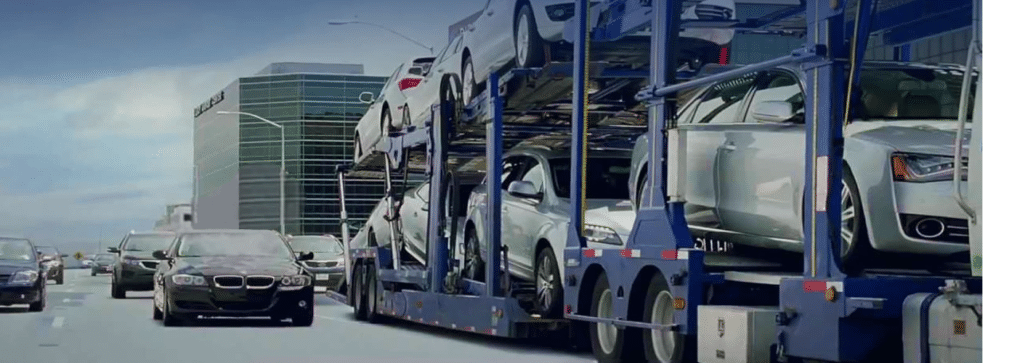Introduction To The Chevrolet Bel Air
The Chevrolet Bel Air stands as an iconic symbol of American automotive history, embodying the spirit of post-war optimism and the golden age of car culture. First introduced in 1950, the Bel Air quickly garnered a reputation for its innovative design, luxurious features, and robust performance. As a flagship model for Chevrolet, it was instrumental in defining the brand’s identity throughout the 1950s and into the early 1960s.
From its inception, the Bel Air was characterized by its distinctive styling cues that set it apart from other vehicles on the road. The model underwent several redesigns during its production run, each iteration more striking than the last. Notably, the second-generation models produced from 1955 to 1957 are among the most celebrated. These versions featured sleek lines, tailfins, and chrome accents that captured the imagination of car enthusiasts and cemented their place in pop culture.
Underneath its stylish exterior, the Bel Air boasted advanced engineering for its time. It offered powerful V8 engines that provided impressive performance capabilities while maintaining a smooth ride—a combination that appealed to both everyday drivers and car aficionados alike. Inside, it delivered an array of comfort features such as plush seating and advanced dashboard controls which were considered state-of-the-art at that time.
The Chevrolet Bel Air wasn’t just a car; it was a statement piece that reflected American ingenuity and prosperity. Today, vintage auto transport services are often employed to preserve these timeless machines—ensuring they remain cherished artifacts for future generations to appreciate.
Historical Significance Of The Chevrolet Bel Air
The Chevrolet Bel Air, introduced in 1950, holds a distinguished place in automotive history as an emblem of post-war American prosperity and ingenuity. The model line evolved through the 1950s and 1960s, becoming a symbol of style, innovation, and the burgeoning car culture of the era. Initially launched as a premium trim level for Chevrolet’s full-size models, the Bel Air quickly garnered attention for its distinctive design and upscale features.
By 1953, it had become a standalone series within Chevrolet’s lineup. The second-generation Bel Airs (1955-1957) are particularly revered by collectors and automobile enthusiasts. These “Tri-Five” models are celebrated for their iconic design elements such as tailfins, chrome detailing, and two-tone paint schemes that epitomized the optimistic spirit of mid-century America. Moreover, the Bel Air was not just about aesthetics; it was at the forefront of technological advancements.
For instance, the introduction of V8 engines in these models marked a significant performance upgrade that appealed to speed enthusiasts and average consumers alike. Features such as power steering and brakes further highlighted General Motors’ commitment to combining comfort with cutting-edge engineering. Beyond its mechanical prowess and stylish appearance, the Chevrolet Bel Air became deeply ingrained in American popular culture. It appeared in numerous movies and television shows, reinforcing its status as an icon of its time.
Its influence extended beyond U.S borders too; it became a symbol of Americana admired globally.
The Rise Of Vintage Auto Transport Services
The rise of vintage auto transport services has been a notable trend in recent years, fueled by the growing enthusiasm for classic cars like the Chevrolet Bel Air. As automotive aficionados and collectors increasingly seek out these timeless vehicles, the demand for specialized transportation solutions has surged. Unlike modern automobiles, vintage cars require meticulous handling and care during transit to preserve their historical value and pristine condition.
The Chevrolet Bel Air, with its iconic design and rich history, epitomizes the essence of classic American automotive culture. Transporting such an esteemed vehicle is not merely about moving it from one location to another; it involves ensuring that every aspect of its journey is executed with precision. This necessity has driven the emergence of dedicated vintage auto transport services that cater specifically to classic car owners’ unique needs.
These specialized services offer a range of features designed to protect and preserve vintage vehicles during transit. Enclosed trailers shield them from the elements, while advanced strapping systems prevent any movement that could lead to damage. Additionally, many companies provide real-time tracking updates, giving owners peace of mind by allowing them to monitor their beloved cars throughout the journey.
Furthermore, experienced handlers who understand the intricacies of classic automobiles are integral to these operations. Their expertise ensures that every stage of transport—from loading and securing to unloading—is conducted with utmost care. As a result, vintage auto transport services have become indispensable for enthusiasts wishing to maintain their treasures’ integrity while relocating them across distances.
In essence, the rise of these specialized services underscores a broader cultural appreciation for classic cars like the Chevrolet Bel Air. It reflects an acknowledgment that preserving automotive history requires more than just admiration—it demands dedicated logistics solutions tailored to protect these icons on every mile they travel.
Choosing The Right Transport Method For Your Bel Air
When it comes to transporting a vintage Chevrolet Bel Air, the method you choose can significantly impact the vehicle’s safety and condition. The Bel Air is not just a car; it’s a piece of automotive history, often cherished by its owners for its classic design and nostalgic value. Therefore, selecting the right transport method is crucial.
First and foremost, consider enclosed transport. This option offers maximum protection from the elements such as rain, snow, and road debris. Enclosed trailers are essentially moving garages that shield your Bel Air from potential damage during transit. Given the age and value of a vintage Bel Air, this added security can provide peace of mind.
However, if budget constraints make enclosed transport less feasible, open transport might be an alternative to consider cautiously. While this method exposes your vehicle to weather conditions and road hazards, reputable companies take significant precautions to minimize risks. Ensure that you select a transporter with excellent reviews and comprehensive insurance coverage.
Another vital aspect is door-to-door versus terminal-to-terminal service. Door-to-door service offers convenience by picking up your Bel Air directly from its current location and delivering it to your specified destination. This reduces the need for additional handling, which can sometimes lead to minor damages or increased wear.
Lastly, always verify the credentials of any transport company you’re considering. Look for companies with strong reputations in classic car transportation specifically since they will have experience dealing with vehicles like the Chevrolet Bel Air.
Ultimately, choosing the right transport method involves balancing cost with protection levels while ensuring that your cherished Chevrolet Bel Air arrives safely at its new destination.
Preparing Your Chevrolet Bel Air For Transport
Preparing your Chevrolet Bel Air for transport requires careful attention to detail, ensuring that this classic gem arrives at its destination in pristine condition. The process begins with a thorough cleaning of both the interior and exterior. Washing and waxing the car not only help in identifying any existing scratches or dents but also provide an added layer of protection against potential contaminants during transit.
Next, a meticulous inspection is crucial. Documenting the current state of your Bel Air through photographs provides a visual record, which can be invaluable should any disputes arise regarding its condition upon delivery. Pay particular attention to vulnerable areas like chrome trims, bumpers, and glass components. Additionally, check for any mechanical issues; addressing these beforehand can prevent complications during loading and unloading.
Securing loose parts is another essential step. Remove or tightly secure external accessories such as antennas, mirrors, and hubcaps to avoid damage or loss during transport. Inside the vehicle, ensure that all personal items are removed; this not only reduces weight but also minimizes the risk of theft or damage.
Fluid levels should be examined and adjusted accordingly. Ensure that fuel levels are low—no more than a quarter tank—to minimize weight while still allowing for necessary maneuvers. Verify that tire pressure is optimal to facilitate safe loading and unloading procedures.
Finally, communicate clearly with your chosen transport service provider about any specific requirements or concerns you have regarding your Chevrolet Bel Air. Transparent communication ensures that both parties are aligned on expectations and procedures throughout the journey.
By following these steps diligently, you can rest assured that your cherished Chevrolet Bel Air will be transported safely and efficiently to its new destination.
Ensuring Safe And Secure Handling During Transit
Ensuring the safe and secure handling of a Chevrolet Bel Air during transit involves a meticulous and multifaceted approach, given the car’s vintage status and historical value. The process begins with choosing a reputable auto transport company that specializes in classic cars. These companies understand the unique challenges associated with transporting such valuable vehicles and have specific protocols in place to mitigate potential risks.
The first critical step is conducting a thorough pre-transport inspection. This involves documenting the current condition of the Bel Air, noting any existing imperfections, and taking detailed photographs from multiple angles. This documentation serves as an essential reference point should any damage occur during transit.
Loading the Chevrolet Bel Air onto the transport vehicle is another delicate phase. Specialized equipment such as hydraulic lift gates or low-angle ramps are often employed to minimize stress on the car’s frame and suspension. Additionally, soft straps or wheel nets are used instead of traditional chains to secure the vehicle, thereby preventing scratches or dents.
During transit, climate-controlled carriers might be used to shield the vintage car from extreme temperatures and humidity levels that could potentially cause damage to its paintwork or interior components. Enclosed transport options offer further protection against environmental hazards like road debris, rain, or UV radiation.
Upon arrival at its destination, another comprehensive inspection ensures that no damage has occurred during transit. The combination of expert handling techniques, specialized equipment, and thorough inspections ensures that your Chevrolet Bel Air reaches its new home in pristine condition—preserving both its aesthetic appeal and historical significance for years to come.
Costs And Insurance Considerations For Vintage Auto Transport
When transporting a vintage Chevrolet Bel Air, understanding the costs and insurance considerations is crucial to ensuring both peace of mind and financial protection. The cost of vintage auto transport can vary significantly based on several factors including distance, type of transport, and the specific requirements of your vehicle. Enclosed transport, which offers greater protection from the elements and road debris, is often recommended for classic cars like the Bel Air.
While more expensive than open transport, it provides a higher level of security for your prized possession.
In addition to the transportation fees, it’s essential to consider insurance coverage. Standard auto insurance policies may not provide adequate coverage for vintage vehicles during transit. Therefore, it’s advisable to invest in specialized classic car insurance that specifically covers transportation risks. This type of policy typically includes provisions for damage incurred during loading and unloading as well as in-transit incidents.
Before committing to a transport service, verify their insurance credentials and ensure they offer sufficient coverage limits that align with your car’s appraised value. Requesting a copy of their insurance certificate can provide further assurance that your vehicle will be adequately protected.
Lastly, it’s wise to document the condition of your Chevrolet Bel Air before shipment with detailed photographs and notes on any existing imperfections. This documentation can be invaluable if you need to file an insurance claim due to damage sustained during transit.
By carefully considering both costs and comprehensive insurance options, you can confidently arrange for the safe transport of your cherished Chevrolet Bel Air.
Case Studies: Successful Transports Of Chevrolet Bel Airs
Transporting vintage automobiles, especially iconic models like the Chevrolet Bel Air, requires a blend of meticulous planning, specialized equipment, and experienced handling. Over the years, numerous successful transports have showcased the best practices in this niche field.
One notable case involves a pristine 1957 Chevrolet Bel Air being transported from an estate auction in California to a collector’s garage in Florida. The car had been meticulously restored to its original condition, and any damage during transit would have significantly decreased its value. The transport company utilized an enclosed carrier to shield the vehicle from weather elements and road debris.
Additionally, hydraulic lift gates ensured that the car could be loaded and unloaded without risking damage to its undercarriage or suspension system. The owner was provided with real-time tracking updates throughout the journey, offering peace of mind until the cherished vehicle arrived safely at its destination.
Another case features a 1955 Chevrolet Bel Air being shipped internationally from Canada to a new owner in Germany. Given that international transport involves several logistical complexities—such as customs clearance and compliance with varying regulations—the transport company coordinated closely with customs brokers and utilized specialized shipping containers designed for classic cars. Upon arrival in Germany, local experts were on hand to handle unloading procedures carefully.
These case studies illustrate not only the technical aspects of transporting vintage Chevrolet Bel Airs but also highlight the importance of communication and coordination between all parties involved—from shippers to owners—to ensure that these treasured vehicles reach their destinations unscathed and ready for their next chapter in automotive history.









